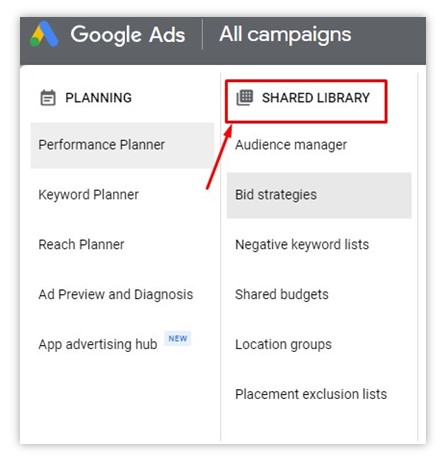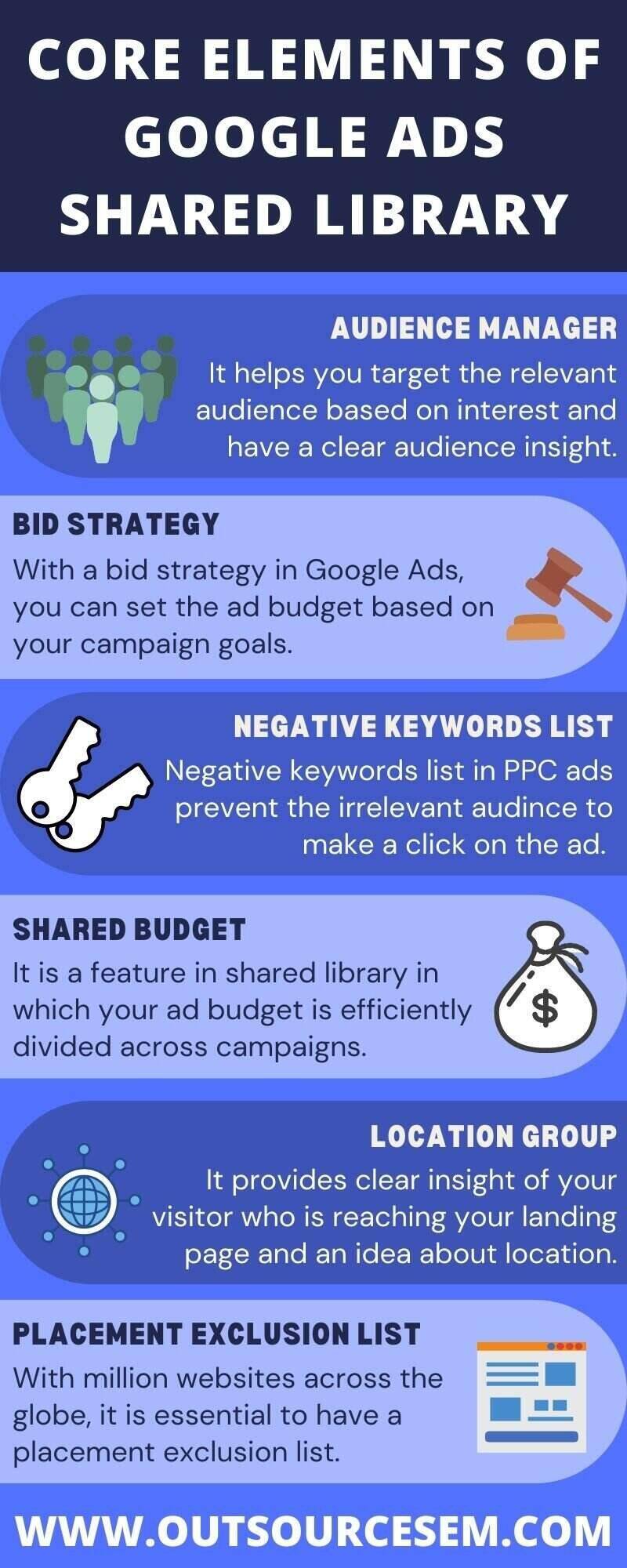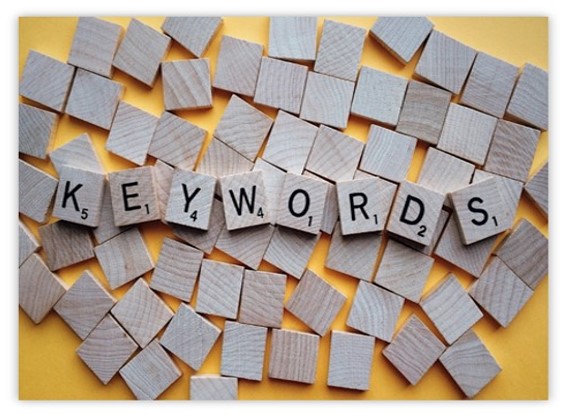The world of paid advertising is ever-evolving, and the largest search engine -Google, provides you with the opportunity to display your PPC ads across multiple range of products like Google Display Network, Google AdSense, Google Ad Manager, etc. With nearly 4.8 billion searches per day, Google Ads allows you to get in touch with a vast audience. In the Google Ads account, multiple ad groups, and Google Ad campaigns are operating simultaneously and performing changes consecutively could be difficult. To minimize your advertising efforts in managing multiple Google Ads campaigns, you can leverage Google Ads shared library, and improve your PPC ads click-through rate, ad rank and position, conversion rate, etc.
Google Ads shared library allows you to perform multiple changes in an ad group in a single go. If similar changes are to be done in PPC ads, using Google Ads shared library is the best option. With many new PPC tools and features being updated in the Google Ads account, you have more dynamic ways of reaching the target audience. So, with Google Ads shared library, you can work on bidding strategies in the shared budget, including negative keyword list, have placement exclusion list, etc. In this article, you will have an idea about Google Ads shared library and how implementing it in your PPC Ads strategy provides you with a better quality score, increased view through conversion and many other benefits.
What is Google Ads Shared Library
On July 24, 2018, Google Adwords became Google Ads. It provides a range of campaign types you can run on this platform to make the relevant audience click on the ad. You can run display ads, search ads, video ads, etc., so that none of your target audience is untouched. When working to make similar changes in these ad campaigns, Google Ads shared library minimizes your advertising efforts.
Google Ads has a shared library option to share various resources across multiple campaigns. Once the changes are applied in an ad campaign, it automatically gets implemented across all similar campaigns. This Google Ads shared library is a fast way to make larger changes across many campaigns. It may be easy to change a single variable across one or two ad campaigns. Bit, this feature is a boon when handling larger accounts.
With a proper PPC plan & strategy, you can lower the amount of time on bid strategies, negative keywords, etc. Earlier, there was also an option to share the ads. But, since February 11, 2015, Google has removed the feature and now you will no longer be able to share ads across multiple ad groups campaigns using the Google Ads shared library. After you have logged in to your Google Ads account, you can find the Google Ads shared library in the ‘tools & setting’ option. You can find this in the left-hand side navigation section in Google Ads editor. In Google Ads editor, the shared library provides you with the option of various ad extensions, negative keyword list, negative placement list, shared budget and labels.
With the increase in social media marketing, businesses of all sizes are willing to run PPC ads. Facebook Ads, Youtube Ads, LinkedIn Ads, and many other online platforms have their shared library. These social media platforms have various ad features like running ads in the form of images, positing on the news feed, reels, and stories, etc. So, even minor ad fatigue can wreck your PPC ad campaign.

Why use Google Ads Shared Library?
Google is the largest search engine to date. It clearly means that businesses of all sizes would wish to run their PPC ads on this advertising platform. Google Ads allows you to get in touch with a vast audience and increase sales for your business. With various types of Google Ads, making changes one by one in the Google Ads campaign having similar products can be complex. The prime aspect to focus on in Google Ads account is that your ad budget is not wasted. So, you need to conduct keyword research and perform audience targeting based on these. You can also target audience to ensure that your relevant ads appear to the specified audience.
Google Ads shared library reduces your time and effort to make changes in ad campaigns. Using this Google Ads library, when you make a change in a single campaign, it will be applied to all the other campaigns in the Google Ads account. This way, you can save this in performing other activities to improve the PPC ad campaign's performance. You can prepare a report on various PPC metrics like impression share, quality score, cost-per-click, cost-per-acquisition, return on ad spend (ROAS), etc., to figure out how your Google Ads are performing and then make changes accordingly in the Google Ads shared library.
There are different ads like responsive ads, display ads, expanded text ads, etc., running in the Google Ads campaign. There need to be changes done in these based on user intent and consumer behavior. Also, with continuous changes in the advertising world, performing changes in the appropriate ad format is of utmost importance to make the target audience move down the marketing funnel to take the intended action. With white label PPC, you can have the best management of your Google Ads and have a complete PPC solution.
Core elements of Google Ads shared library

1. Audience manager - Google audience manager helps you target the relevant audience based on interest and have a clear audience insight. It helps you know the user intent and what ads interest them the most. You get to know the type of ad that drives more traffic to the landing page. The audience manager helps save time and provides remarketing opportunities to target the audience who visited the webpage but the user did not convert. The audience segmentation can be beneficial. You can then prepare the ads based on consumer behavior and work on PPC strategies to increase ad creativity and present the ad more intuitively. Some of the benefits of audience manager in Google Ads library are:
• With the audience manager, you can monitor the audience sources like Google Ads tag, social media platforms and any other sources that your users are coming from.
• You can create new and clearer audience lists based on the audience sources you have set up.
• You get to know more about the customers so that you can manage your remarketing lists better.

2. Bid strategy - A bid strategy is crucial to have when you work on Google Ads. With a bid strategy in Google Ads, you can set the ad budget based on your campaign goals. With a proper keyword bidding strategy, you can improve the performance of your PPC ads by optimizing the conversion rate, click-through rate, etc. In the Google Ads account, some campaigns share the same bid strategy. The shared library allows these to be created and applied across all the desired campaigns. You can avail of white label PPC services to have an excellent bid strategy for your ad campaigns. Some of the key metrics to focus on in bid strategy are:
• Target CPA
• Target ROAS
• Enhanced cost per click(ECPC)
• Maximize clicks
• Manual CPC bidding
• Target impression share bidding

3. Negative keyword list - A negative keyword list is most important in PPC ads to prevent irrelevant audiences from clicking on your ads. The negative keywords exclude your ads from showing up the irrelevant search terms. In the Google Ads shared library, you can define a negative keyword list and save your ad budget from getting wasted. With various keyword match types, you need to choose the relevant negative keywords so that your ads do not appear for irrelevant search queries. Suppose you are targeting the keyword “door repair” and do not want your ads to appear for “interior door repair”, then negative keywords are the thing to focus on. Some of the advantages of negative keywords are:
• Your ads do not appear to the irrelevant target audience, so it improves your click-through rate.
• Your ad budget does not get wasted on irrelevant clicks.
• Your ads show to the qualified target with high chances of getting converted into customers. It is of much more importance to limited budget campaigns.

4. Shared budget - In PPC ads, you have to pay money to the search engines every time a click is made on your ads. So, you need to monitor the ad budget you are spending to achieve your desired business goals. Shared budget is a great feature provided by Google Ads shared library in which your ad budget is efficiently divided across campaigns. In this case, you will have a single budget that’s allocated to several campaigns within the same Google Ads account. It allows underutilized budgets to reallocate to budget-capped campaigns automatically. It helps you to decrease campaigns limited by budgets, thus improving the performance of the campaign to generate more leads, brand awareness, etc. When setting up, daily budget for individual campaigns, Google looks at individual budgets along with the overall budget (which is total individual budgets added together). It is useful when particular campaigns are not hitting their spending goals, Google will spend an additional amount on other campaigns even if they are capped by a designated budget. With white label PPC, you can easily target the audience to make the most of your PPC ads. Some of the advantages of a shared budget in Google Ads are:
• Efficiency - Google Ads shared budget is efficient. As you may have multiple campaigns running simultaneously, not all campaigns will have the same performance. So, there are chances that you may have some campaigns where your budgets are not being fully utilized and others where you are quickly hitting the limits. So, this misalignment can be easily matched to have a better ROI of your ad budget.
• Spend less time worrying about your budget - In the Google Ads campaign, you need to decide how much you are willing to spend and what amount to set aside. With a Shared Budget, you don’t have to worry about the amount that you need to allocate to each Campaign. All that you need to do is to assign an overall budget. After that, it becomes automatic, depending on how the ad campaign is performing.

5. Location group - Another very important feature in the shared library is that you can target users based on their location. With this, you can have a clear insight into the visitor who is reaching your landing page and an idea about a location they are coming from. While bid adjustment and many other factors are important in paid advertising, working on a location group is equally important as you can miss out on any target audience. Suppose your business deals in winter clothes, so it becomes a necessity that your ads appear across locations that have very low temperatures, as most of the traffic would be driven from such locations. White label PPC services could help select the location group, as they have expertise in demographic targeting. Some of the benefits of location group are:
• It is highly targeted.
• You can attract a lot of customers.
• Convert the .
• It helps improve the trust of the customers and increases brand loyalty.
• Helps in peer to peer marketing.

6. Placement exclusion list - With more than a million websites across the globe, it becomes essential to have a placement exclusion list for your campaign so that your ads appear on trustable websites across the Google Display Network. Although this helps you perform retargeting, you do not want your ad budget wasted on an irrelevant audience. A high-performing campaign leverages the Google Display Network by serving highly targeted ads to users across a huge number of landing pages. With placement exclusion, you can avoid the brands you do not want your product or services to get associated with. Therefore, it is a good idea to have placement exclusion and consider blocking or excluding certain websites. White label PPC services can smartly decide which websites would be best to appear and which websites to block. The advantages of placement exclusion are:
• It prevents your business from getting associated with spammy and irrelevant websites.
• Saves your ad budget on the Google Display Network.

Round off
You must have got an idea of what a shared library is and how implementing it in your PPC planning could help reduce your advertising efforts. It can help you manage your ad groups and ad campaign much better and faster. You must have an idea of which ad groups have the same elements in common so that applying changes could yield the best ROI for your ads. After applying the changes, you should keep monitoring the performance of the ads. You can prepare a PPC report for the same on a weekly or monthly basis to figure out what changes need to be done to optimize the ads. A shared library makes it easier to manage larger accounts with multiple campaigns that share the same variables and better control the ads. If you find it difficult to access the Google Ads shared library, getting in touch with a digital marketing company could be of great help as they have expertise in PPC campaign analysis, mobile ads, e-commerce PPC, white label reports, PPC audit, content marketing, white label PPC report, keyword research, lead generation, remarketing services, etc. and increase online sales.
References:
• How to use the Google Ads shared library
• Manage a shared budget across campaigns
